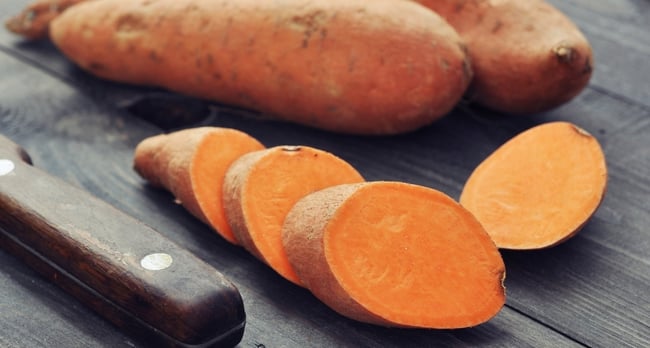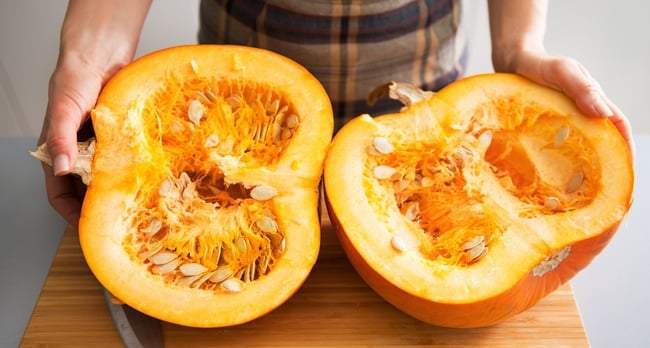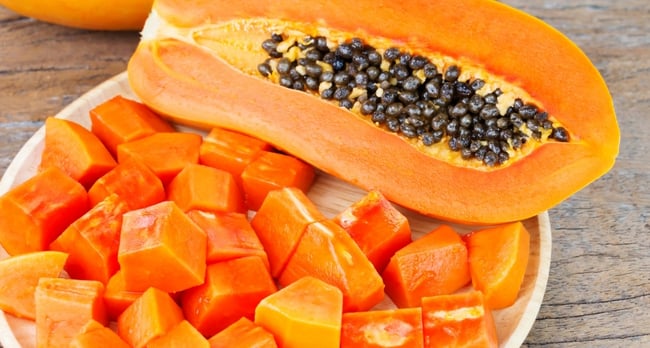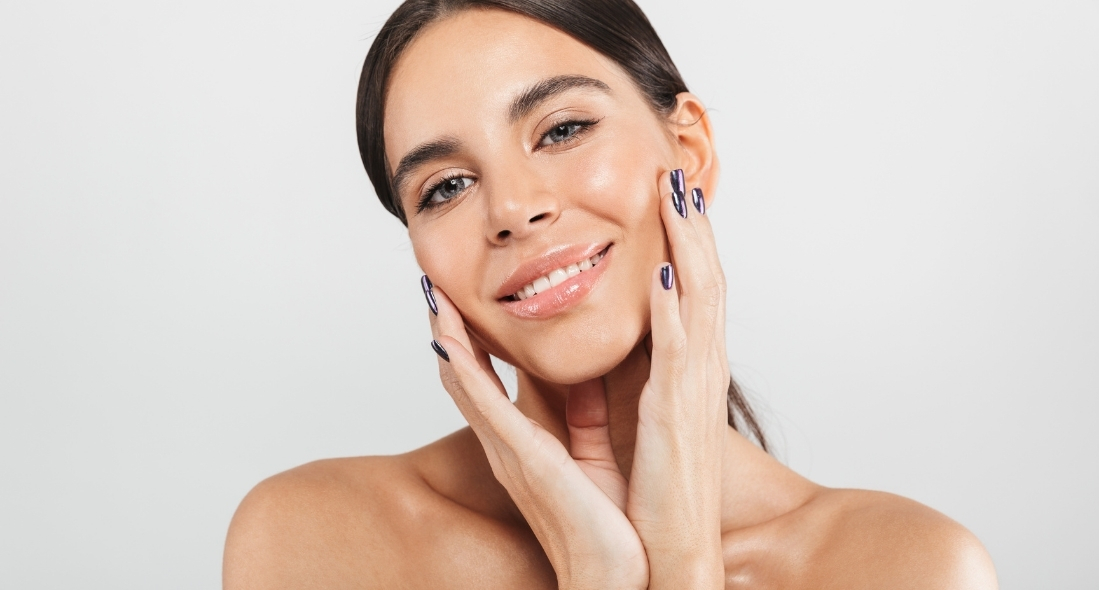The outside appearance of our skin usually reflects what is going on inside our bodies. While countless products of creams and scrubs can temporarily fix acne, a long-lasting change starts from within.
Several dermatologists and scientific research studies have shown that a healthy diet that contains low-glycemic, high protein foods can fight and prevent blemishes from appearing[5].
These types of foods typically come from delicious fruits and vegetables jam-packed with nutrients. Here are 3 orange superfoods that fight acne to help you confidently look and feel your best.

1. Sweet Potato
Sweet potatoes are sweet, starchy root vegetables that are highly nutritious in antioxidants, vitamins, and minerals. Sweet potatoes in particular contain Retinol, also known as a Vitamin A supplement, that is used to fight against acne and wrinkles.
Sweet potatoes give off a vibrant bright orange color because of all of the Vitamin A beta-carotene that is contained within the vegetable. Vitamin A lightens discoloration of the skin, reduces inflammation, and clears clogged pores[1]. Sweet potato is also rich in:
- Vitamin B, C, D
- Calcium
- Iron
- Magnesium
- Phosphorus
- Potassium[2]

2. Pumpkin
Pumpkins are fruits that belong to the squash family and they have health properties packed with minerals and vitamins that make them similar to vegetables. Pumpkins are loaded with nutrient enzymes, antioxidants, and zinc, all of which restore pH balance and soften the appearance of skin.
Pumpkin specifically contains antioxidants, such as alpha-carotene and beta-carotene, both with the ability to prevent free radicals from causing further damage to skin cells from the sun. In addition, zinc regulates oil production which prevents clogging of pores and acne breakouts from occurring as often[3]. Pumpkin is also rich in:
- Vitamin A
- Vitamin B2
- Vitamin C
- Vitamin E
- Potassium
- Manganese[2]

3. Papaya
Papaya is not only a heart-healthy fruit that can reduce the risk of chronic diseases but it is also a powerful superfood for rejuvenating your skin. Papaya contains a digestive enzyme that unclogs pores, fades acne scars, and exfoliates dead skin cells.
Papaya also contains numerous vitamins and minerals, such as Vitamin C, which encourages new collagen to grow and can improve skin elasticity while hydrating and removing fine lines or wrinkles[4]. Papaya is also rich in:
- Vitamin A
- Vitamin K
- Folate
- Calcium
- Potassium
- Magnesium[2]
Choosing a healthy plant-based and vegan diet is most beneficial when it comes to:
-
Higher levels of energy;
-
Improved sleep;
-
Aids in energy and overall happiness;
-
Provides a sense of comfort and relief;
-
Could prevent major diseases such as obesity and diabetes;
-
Accomplish weight-loss and management; and
-
Improves mental and cognitive functioning.
There are really no excuses not to try healthier habits in your everyday life. If you are a man or woman looking for specific benefits of adopting healthier habits or just want to know about the general healing properties of herbs. Please remember to comment or post any health questions, or contact us directly!
Also feel free to share any of your favorite recipes to make and share it with the Assuaged community on our ➡️ Share A Recipe ⬅️ page!
References
Booth, Stephanie. “Sweet Potato Health Benefits.” WebMD, WebMD, www.webmd.com/food-recipes/benefits-sweet-potatoes.
Cirino, Erica. “Anti-Acne Diet: Get Rid of Acne by Eating Healthier.” Healthline, Healthline Media, 25 Oct. 2018, www.healthline.com/health/anti-acne-diet.
Obenschain, Chris. “6 Surprising Health Benefits of Pumpkin.” WebMD, WebMD, www.webmd.com/food-recipes/features/6-surprising-health-benefits-of-pumpkin.
“Papaya Fruit: Health Benefits, Uses, and Risks.” Medical News Today, MediLexicon International, www.medicalnewstoday.com/articles/275517#recipes.
Smith, Robyn N et al. “The effect of a high-protein, low glycemic-load diet versus a conventional, high glycemic-load diet on biochemical parameters associated with acne vulgaris: a randomized, investigator-masked, controlled trial.” Journal of the American Academy of Dermatology vol. 57,2 (2007): 247-56. doi:10.1016/j.jaad.2007.01.046


















